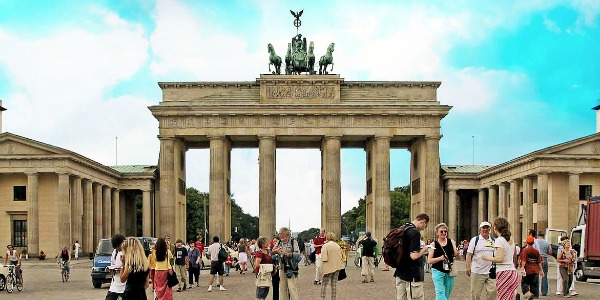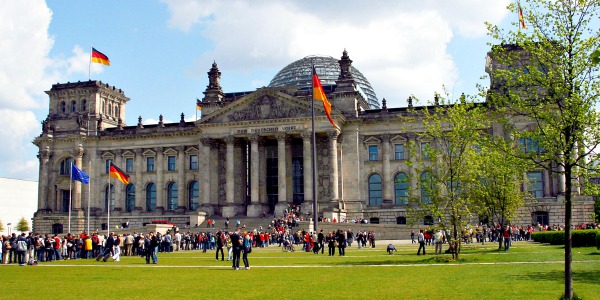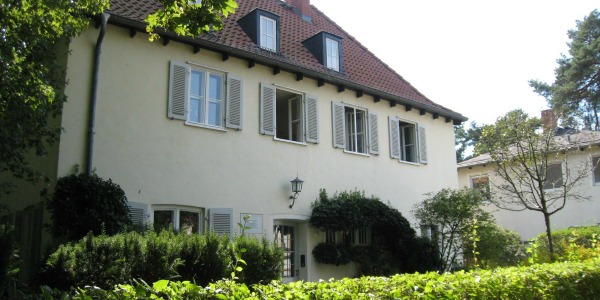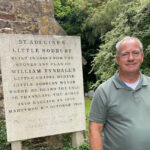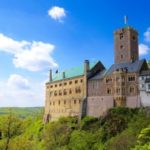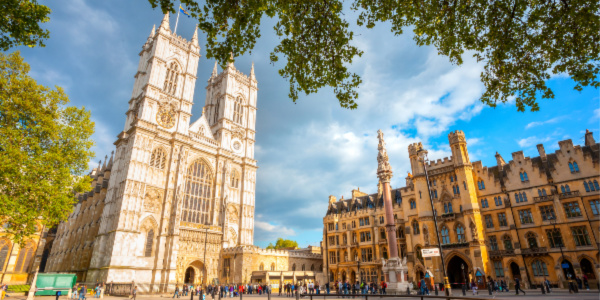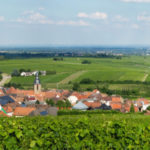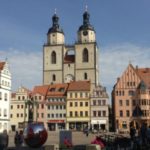Berlin is the capital of Germany and a great starting point for a tour of Europe.
Berlin Cathedral (Berliner Dom Am Lustgarten)
Berlin Cathedral is the largest church in the city and serves as a vital center for the Protestant church of Germany. Their website states, “Praising God, calling upon Him and honoring His name, asking for His forgiveness and His comfort, and passing on the stories of hope – these are our central goals.” The Berliner Dom was the former court cathedral of Prussia’s royal family, the Hohenzollern and was conceived as a protestant answer to St. Peter’s Basilica in Rome. Four heroes of the Reformation, Martin Luther, John Calvin, Phillip Melanchthon, Swiss Ulrich Zwingli are shown in statues, with their fingers pointing to the Bible, as a message to future generations to seek truth. With Martin Luther’s support, the elector established the Reformation in 1539, and the “Dom” became a Lutheran church.Kaiser Wilhelm Memorial Church (Kaiser Wilhelm Gedachtniskirche)The church was built in the late 1800s and badly damaged in World War II. It was left as a partial ruin as a visual reminder of war’s destruction, so this is an emotional place to visit. It’s also a calm tranquil spot on a busy day of touring to just sit, collect your thoughts and pray. The church is named after Wilhelm I who can be seen in the well-preserved mosaics in the vestibule of the old church. The vestibule entry area is also a war memorial, represented by historical illustrations of the church and the theme of cross cultural reconciliation.
Berlin Wall Memorial (Gedenkstätte Berliner Mauer
Poignant, stark, eerie and gripping, this museum brings a visitor face to face with the horrors Berlin used to suffer. The facility shows how the border facilities were constructed and imparts to the visitor a lasting impression of the construction, which once divided the entire country. The Berlin Wall enclosed West Berlin from August 13, 1961 to November 9, 1989, cutting a line through the entire city center.Brandenburg Gate (Brandenburger Tor)
This is a focal point of the whole nation, and a symbol for Berlin. Citizens flocked here when the Berlin Wall fell, with days and weeks of celebrations. The gate is located at the end of the Unter den Linden Strasse/Street, near the Reichstag, and Check Point Charlie. There’s a memorial to people who were shot trying to climb the Berlin Wall, at the corner to Scheidemannstrasse & Ebertstrasse.Pergamon Museum
This world-class museum showcases rare antiquities and religious art from such great cities as Pergamum, Miletus and Babylon, including the famous Ishtar Gate. The Pergamon, with nearly 1 million visitors each year, is the most popular museum in the city. Don’t miss the Pergamon Altar from the ancient city of Pergamon (one of the 7 Churches of Revelation); the gateway to the Greek city of Miletus built by Emperor Hadrian, and the Ishtar Gate and Processional Way built by Nebuchadnezzar in Babylon. During the current stage of renovations, the hall containing the Pergamon Altar will remain closed to the public for five years, due for reopening in 2019.Check Point Charlie Museum (Mauermuseum Haus am Checkpoint Charlie)
East Berliner’s escape attempts- ingenious and daring, risky and sometimes successful are showcased here. Gliders, home-made hot air balloons, cars with secret compartments- many displayed with authentic newspaper clippings and media. People came over, under or through the wall. The museum is a must see to get a handle on the soul of this once divided nation and Berlin.The Reichstag
The Reichstag was built to house the Parliament of the Federal Republic of German. It was designed by Paul Wallot and completed in 1894. A month after Hitler seized power in 1933, the building was set on fire. Hitler blamed the fire on communists and used it as a pretext to demand emergency powers. It was bombed by the Allies during World War II and stormed in 1945 by Russian troops (you can still see the graffiti they left behind). The Reichstag is now home to the German Bundestag (parliament) but retains its original name. The glass dome atop the building embodies the ideals of transparency in government. Climb above the Reichstag with a spiral staircase for a peek inside below and a spectacular view of Berlin – if the waiting in the queue is not too long.Memorial to the Murdered Jews of Europe, Holocaust Memorial
Near the Brandenburg Gate, the Holocaust Memorial is a simple, but powerful tribute to the Jews that died as a result of Hitler’s extermination plan. The 2,711 slabs are arranged in a wave-like pattern over 205,000 square feet. Each stone is unique, varying from ankle high to over six feet tall. There is no set pattern and visitors may walk in any direction through the peaceful, quiet stones. An Information Center which is underneath offers information and personal stories of people affected by the actions of the Nazi party; not recommended for youth under 14 due to the subject matter.Dietrich Bonhoeffer House Museum
Deitrich Bonhoeffer is a modern day hero of faith, who stood strong during the Nazi era. Bonhoeffer helped found the Confessing Church in Germany. In his book, The Cost of Discipleship, Bonhoeffer rebuked nominal Christians: “Cheap grace is the preaching of forgiveness without requiring repentance, baptism without church discipline. Communion without confession. Cheap grace is grace without discipleship, grace without the cross, grace without Jesus Christ.” Former President Jimmy Carter is quoted as saying, “Dietrich Bonhoeffer died April 9, 1945, just a few days before the allied armies liberated Germany. He was executed on orders of Heinrich Himmler. He died a disciple and a martyr…” The Bonhoeffer Museum can be visited by prior appointment. He lived here with his parents and met with others who were planning resistance against the Nazis. He was arrested here on April 5, 1943 and later died in the Flossenburg Concentration Camp.Germany’s capital Berlin is a wonderful city to explore multiple eras of history.
Friedrich Wilhelm of Brandenburg built up the city at the end of the 17th century.
The Edict of Potsdam on 29 October, 1685, opened the gates for vast immigration.
By 1871 Berlin’s population had reached 1 million.
After World War II one-third of Berlin’s buildings had been destroyed, its overall population had decreased by more than 1 million, and its Jewish population had fallen by more than 150,000 as a result of emigration and extermination in death camps. After World War II, Berlin was split into four occupation sectors divided among Great Britain, France, the U.S. and the Soviet Union.
The Soviet Union blockaded the three western sectors for 11 months in 1948 and 1949, which sparked a massive airlift by the Western powers. The German Democratic Republic was proclaimed in East Berlin, its capital, in October 1949. The three western sectors, although officially under occupation by the Western allies, became a city-state linked to the Federal Republic of Germany, which had its capital at Bonn.
The Berlin Wall went up in August 1961 and sealed the division of the city into east and west for three decades. On 9 November 1989, the Wall surrounding the western sector was opened, setting the stage for the reunification of Germany on 3 October 1990.
In June 1991, the united German Parliament voted to move itself and parts of the federal government from Bonn to Berlin, which occurred gradually through the end of the 1990s. Since the fall of the Wall and reunification, Berlin has experienced dramatic physical and social change as the reborn capital and cultural center of Germany.

Berlin Cathedral
Berlin Cathedral is the largest church of the city and serves as a vital center for the Protestant Church in Germany.

